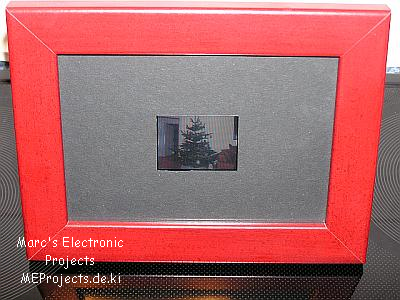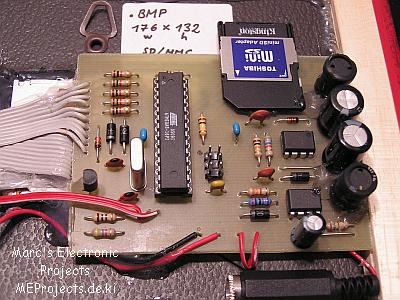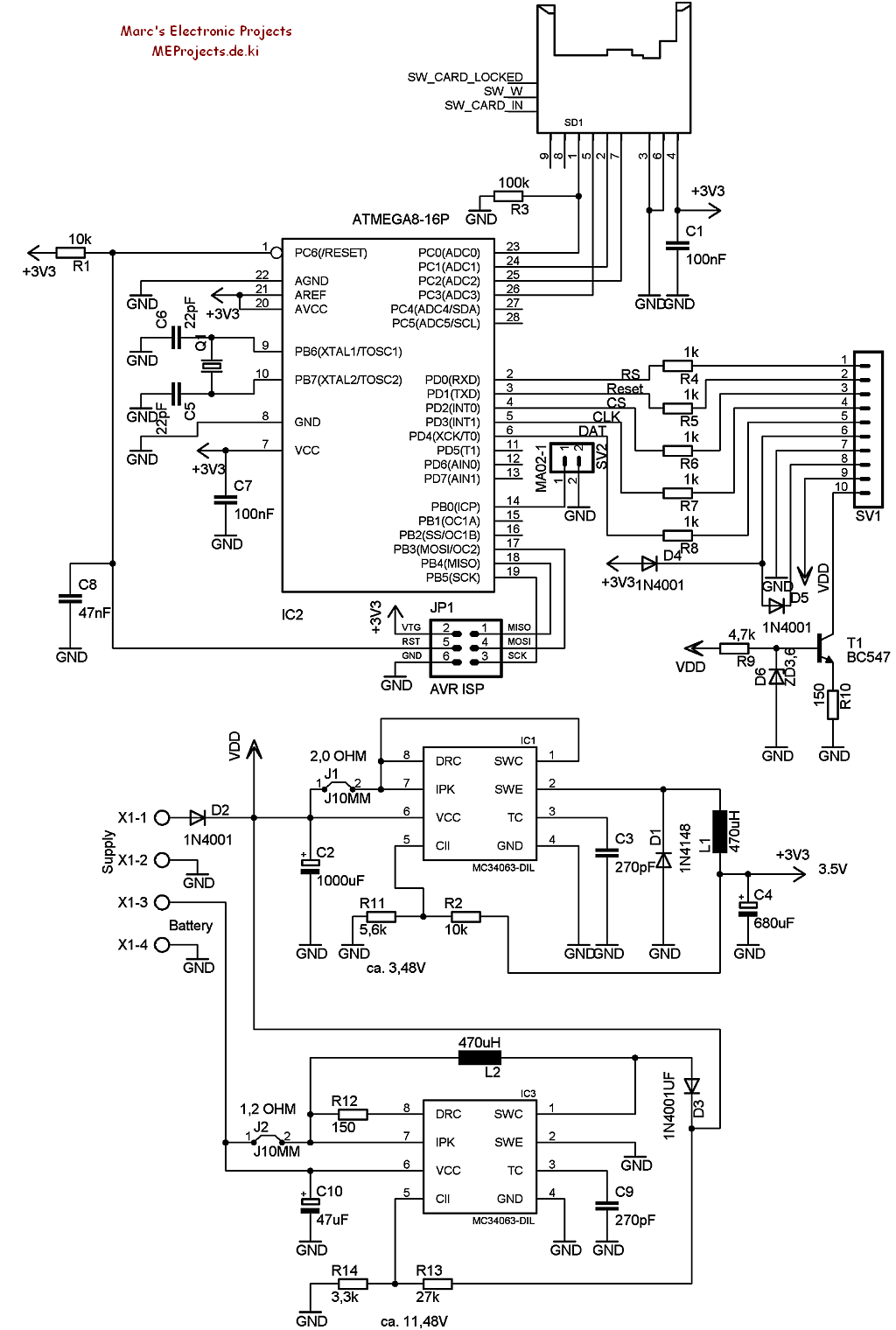
A Digital-Picture-Frame with the AVR-Mega8 and the Siemens S-65 Color Display
I frequently visit the german Site mikrocontroller.net where a discussion was going on about a DIY-Mini-Digital-Picture-Viewer.
The C-sources were available, no design but a picture that it worked.
I got the S-65 display from eBay (bought two – just in case) and started to design the circuit.Getting the information out of the C-header files I designed the circuit.
 Features:
Features:
- runs on a 9V battery
- runs on an external power source
- a fast forward button
- steady backlight
In oder to achieve the mentioned features the decision fell in favour to the MC34063 switching powersupply IC.
In the design there are two of them.
One is a boost and the other a buck regulator.
Unfortunately the S-65 display’s backlight needs something greater than 10.5V. Running on battery power the backlight would not light up!
So the boost regulator IC3 will turn the The second MC34063 provides the 3.4V for the AVR-Mega8 Microcontroller and for the display circuitry. Since the S-65 Display runs on 1.9 and 2.9V (somehow funny Values) the diodes D4 and D5 just do the trick. Ok, I know that this is not the most elegant solution, but it’s the most simple one.
The software just needed to be altered a little to get the pinning right (not very clear in the C-header file) to change the startup-backgroung color and to introduce a fast-forward switch on SV2.
With a little change of the timing the Digital-Picture-Frame changes a 176×132 pixel, BMP-file roughly every 20 seconds.
Everything is built on a single layer etched circuit board.
A 512MB SD-card holds the bitmap files and there is enough storage space for years to come.
In order to place the mini-SD Adapter on the top of the PCB I drilled some holes through the PCB and soldered the appropriate pads to each, the adapter and the solpad on the PCB. Then I hot-glued it to the upper side of the PCB.

Hints:
The internal 8MHz oscillator of the AVR-Mega8 is fast enough and gives a nice slide-effect every time a new photo is to be displayed
I use a 9,83 MHz oscillator which makes everything a bit faster but it is actually not worth while (the internal 8 MHz of the AtMega8 is quick enough).